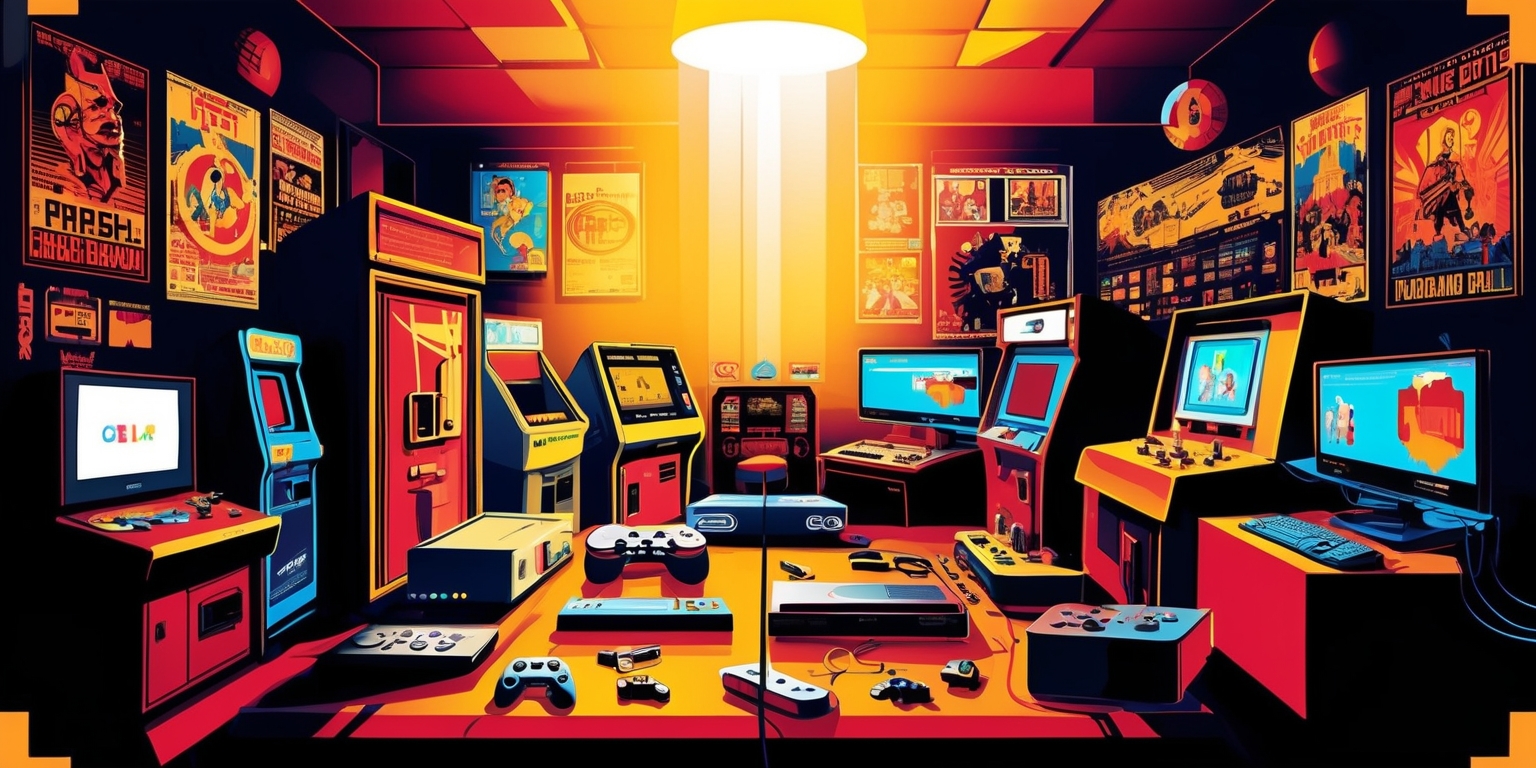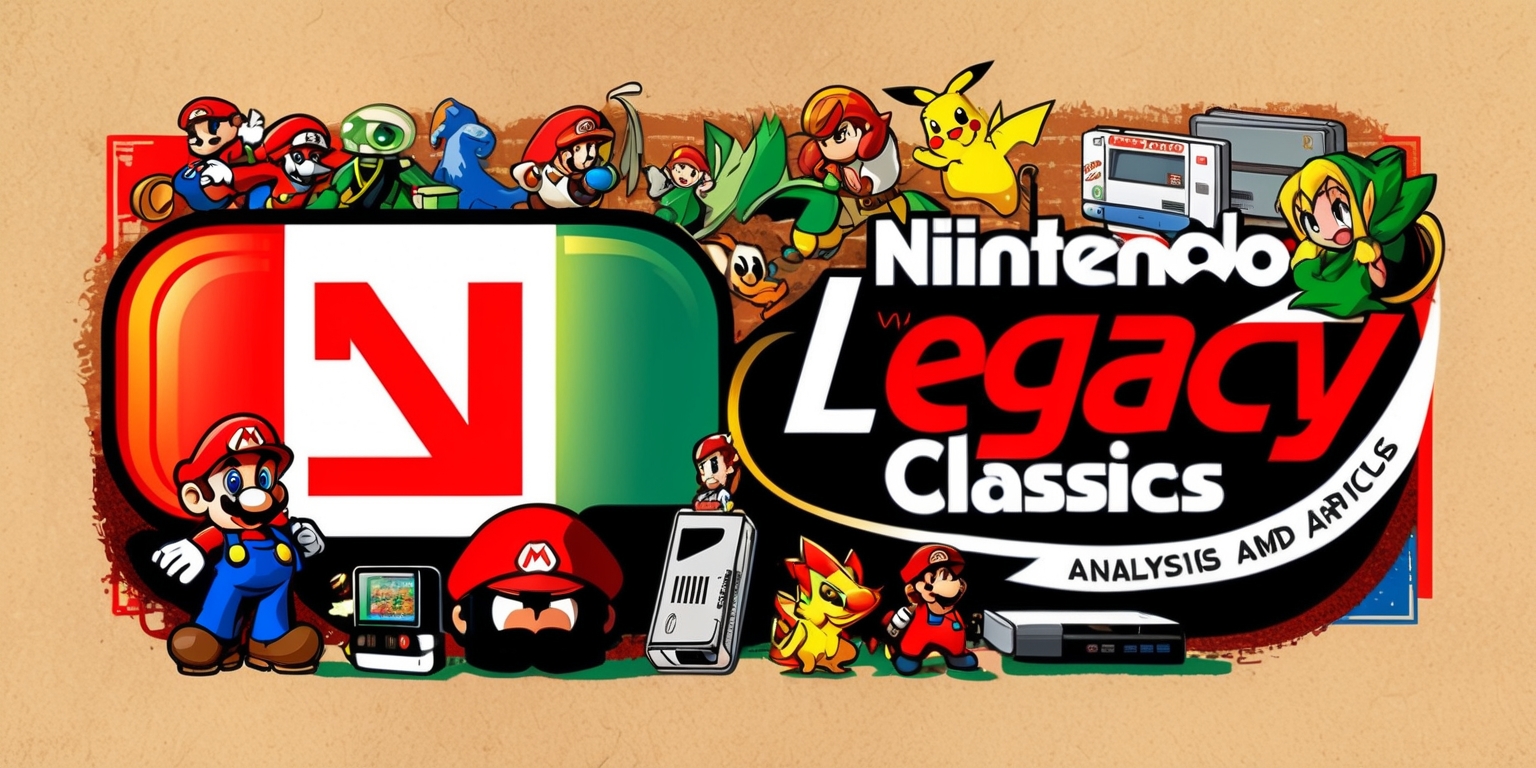Reborn Legacies: The Art of Curated Nostalgia in Modern Gaming
- 2025-08-11

The evolution of classic gaming on modern platforms has become an intriguing journey worth exploring. Over time, the deliberate pace at which treasured titles are reintroduced has revealed both challenges and hidden advantages. This progression invites gamers to rediscover experiences that once defined entire eras while learning to appreciate the strategy behind careful releases. Rather than overwhelming players with an entire catalog at once, the measured pace creates moments of anticipation and deeper engagement, transforming each release into an event. This analysis thoroughly examines the diverse dimensions of this approach, examining its impact on gameplay, functionality, aesthetics, and the broader gaming culture cultivated around these iconic titles.
Revisiting A Storied Legacy
The history of legacy games forms the backbone of a cherished cultural heritage among longtime enthusiasts and newcomers alike. Nintendo, known for its storied back catalog, now carefully reintroduces classics that once defined entire generations. This deliberate approach allows players to savor each title as it returns to the spotlight, creating a renewed sense of discovery and nostalgia. Instead of flooding the market with a vast selection from the start, Nintendo opts to tease the catalog gradually, ensuring that each title feels like a celebrated event. While the initial lineup may seem modest, this pacing helps keep each release significant, encouraging players to revisit games that require deeper time investments. The attention to detail in restoring these classics echoes the company’s commitment to honoring their historical impact.
The Gradual Unfolding of Digital Archives
From the early days of digital storefronts, Nintendo's strategy has been one of careful curation over rapid deployment. Early digital platforms prioritized a handful of time-honored titles to introduce gamers to a cherished past. This method was notably different when compared to contemporary practices that offer instant access to vast libraries. By slowly repackaging long-lost classics, Nintendo encourages gamers to take a measured journey through its digital archives. This approach not only protects the historical value of each game but also provides ample time for them to be appreciated fully by an audience accustomed to rapid consumption. The measured cadence ultimately builds excitement and establishes a rhythm in which every release feels essential and worthy of attention. Such pacing complements modern gaming trends by offering a curated experience amidst the digital deluge.
Digital Orientation and Functional Integration
Modern consoles have redefined how legacy titles are integrated into contemporary gaming ecosystems. Nintendo’s current strategy of delivering classic titles through a subscription-based model has set a new functional precedent. Instead of purchasing games individually, players now enjoy an expanded library as part of their membership—a move that not only streamlines access but also modernizes the user experience. This digital orientation brings classic controllers and gameplay innovations into a seamless interface, where the legacy of each title is celebrated in a fresh context. By integrating these classics into a broader service, Nintendo creates a bridge between the past and present. Gamers are immersed in a world where venerable narratives and modern gaming features coexist harmoniously, highlighting both the technological advancements and the artistic legacy of these games.
Curated Experiences in a Saturated Market

In a landscape brimming with content, the impact of curated releases becomes apparent. The careful curation of classic titles by Nintendo stands out as a distinct departure from the typical flood of digital entertainment options. Rather than making all titles available simultaneously, the measured release schedule fosters a sense of anticipation and exclusivity. This approach underlines quality over quantity and encourages players to fully engage with each game. The anticipation generated between releases makes each arrival feel like a milestone rather than just another entry in an endless list. Within the subscription ecosystem, the gradual unveiling serves as both a reminder of gaming history and a gateway to new experiences. In a saturated market, this deliberate pacing ensures that each title remains memorable and that its unique contributions are not diluted amidst a torrent of distractions.
Diverse Gameplay and Strategic Timing
Classic titles on modern platforms often require a A thorough commitment of time, given that many of these experiences were designed with deep narrative and extended gameplay in mind. The innovative strategy of releasing these games gradually taps into this depth by allowing players to fully invest their time and attention in each title. Rather than encouraging rapid, fleeting engagements with multiple games, this strategy nudges players to immerse themselves in stories and mechanics that demand commitment. The gradual rollout accounts for the varying lengths and complexities inherent in older titles, especially those originally designed for earlier gaming systems. Benefiting from this thoughtful release schedule, players find the opportunity to rediscover cherished narratives and develop a greater appreciation for the enduring qualities that made these classics timeless. Strategic timing thus transforms each release into a meaningful event that resonates with the audience long after the initial play session.
Bridging the Gap Between Eras
The transition from early console experiences to modern digital platforms is as much about technology as it is about cultural continuity. By reintroducing a curated set of classics to a contemporary audience, Nintendo creates a bridge between the golden era of physical media and the current digital-first landscape. Each digital reintroduction honors the original design while adapting features to meet modern usability standards. This transformation ensures that the classic feel is preserved without sacrificing the comfort and convenience expected by today’s gamers. Such a balancing act requires deep respect for the original material and innovative adaptation. As these titles find new life on modern consoles, they serve as a reminder of gaming’s rich history while simultaneously evolving "to address the challenges of our modern age". Bridging this gap enriches both the legacy and the future of interactive entertainment.
Visual Aesthetics and Modern Enhancements
The visual presentation of classic titles has undergone thoughtful modernization without betraying their original charm. Enhanced interfaces and subtle graphical upgrades have breathed new life into these beloved classics, making them accessible to a generation raised on high-definition gaming experiences. The art direction respects the original pixel art and animation while intertwining modern visual sensibilities. This balance allows players to relive the nostalgic ambiance of the past, now presented with improved clarity and smoother performance. Carefully maintained retro aesthetics invite both appreciation of the original art style and enjoyment of modern enhancements. The improved resolution and adapted user interfaces streamline interactions, ensuring that the essence of the classic design is preserved even as technology provides a fresh coat of polish. Such visual rejuvenation highlights Nintendo’s commitment to faithful restorations that encompass both historical integrity and modern appeal.
Curated Nostalgia and Emotional Engagement
The measured release strategy taps deeply into the emotional connection many players have with classic games. Nostalgia is not merely a reaction to a game's mechanics or visual style; it is an immersive experience that binds players to the memories of a bygone era. The spaced-out arrivals allow gamers to relive significant moments at their own pace, while the anticipation of the next release becomes part of the emotional journey. Each reissued title stokes the embers of remembered triumphs and shared communal milestones. In a digital age focused on rapid-fire consumption, this strategy gives space to reflection and appreciation. As players immerse themselves in these familiar yet newly refined worlds, the emotional resonance deepens, underscoring the importance of legacy titles in the broader tapestry of interactive history. This slow drip of content engenders a profound sense of personal and collective heritage.
Service Integration and Platform Dynamics
The integration of classic titles within a subscription service has redefined access to nostalgic content. By bundling retro titles with modern libraries, Nintendo has successfully navigated the challenges of digital rights and user expectations. This method provides a consistent revenue model and simultaneously enriches the gaming experience. Users enjoy a seamless transition between new, exclusive releases and treasured classics, blending innovation with historical reverence. The platform dynamics encourage continuous engagement, ensuring that the legacy titles are not perceived as isolated "not merely relics, but as a vital component of the" ongoing gaming landscape. By aligning the legacy catalog with modern online infrastructures, the service becomes a portal through which players can connect with their past. The adaptability of the interface and the convenience of digital access further contribute to a harmonious coexistence between different generations of gaming.
Anticipation and Cultural Impact
The slow release of classic titles has sculpted a culture of anticipation that benefits both gamers and the broader industry. Rather than erasing the significance of any single release by saturating the market, each new arrival is treated as a tribute to gaming history. This careful pacing not only maintains high levels of interest but also encourages community engagement through shared experiences and discussions about each title’s impact. The measured cadence reinforces the idea that these are not mere reissues, but events which deserve time and consideration. Fans discuss and deliberate over the merits of each game, enhancing the cultural dialogue surrounding video game preservation. Through this process, long-held memories are rekindled and new stories are written about how these classics continue to inspire creativity and innovation across generations.
Legacy Titles as Timeless Experiences
Classic games are more than just nostalgic artifacts; they serve as enduring experiences that have withstood the rapid pace of modern entertainment. The renewed availability of these titles on contemporary systems amplifies their timeless qualities, allowing new audiences to experience storytelling and gameplay that once reigned supreme. The gradual introduction ensures that each title retains its distinct identity and is not lost in a sea of instant digital releases. This strategy underlines Consider this revision: "the importance of maintaining the delicate equilibrium between" heritage and innovation. Gamers are encouraged to immerse themselves in experiences that build on decades of evolution in design and mechanics. By staggered deliveries of these classics, Nintendo reassures players that each title is worth the wait, promoting a deeper exploration into the rich tapestry of interactive design that has influenced countless modern gaming conventions.





